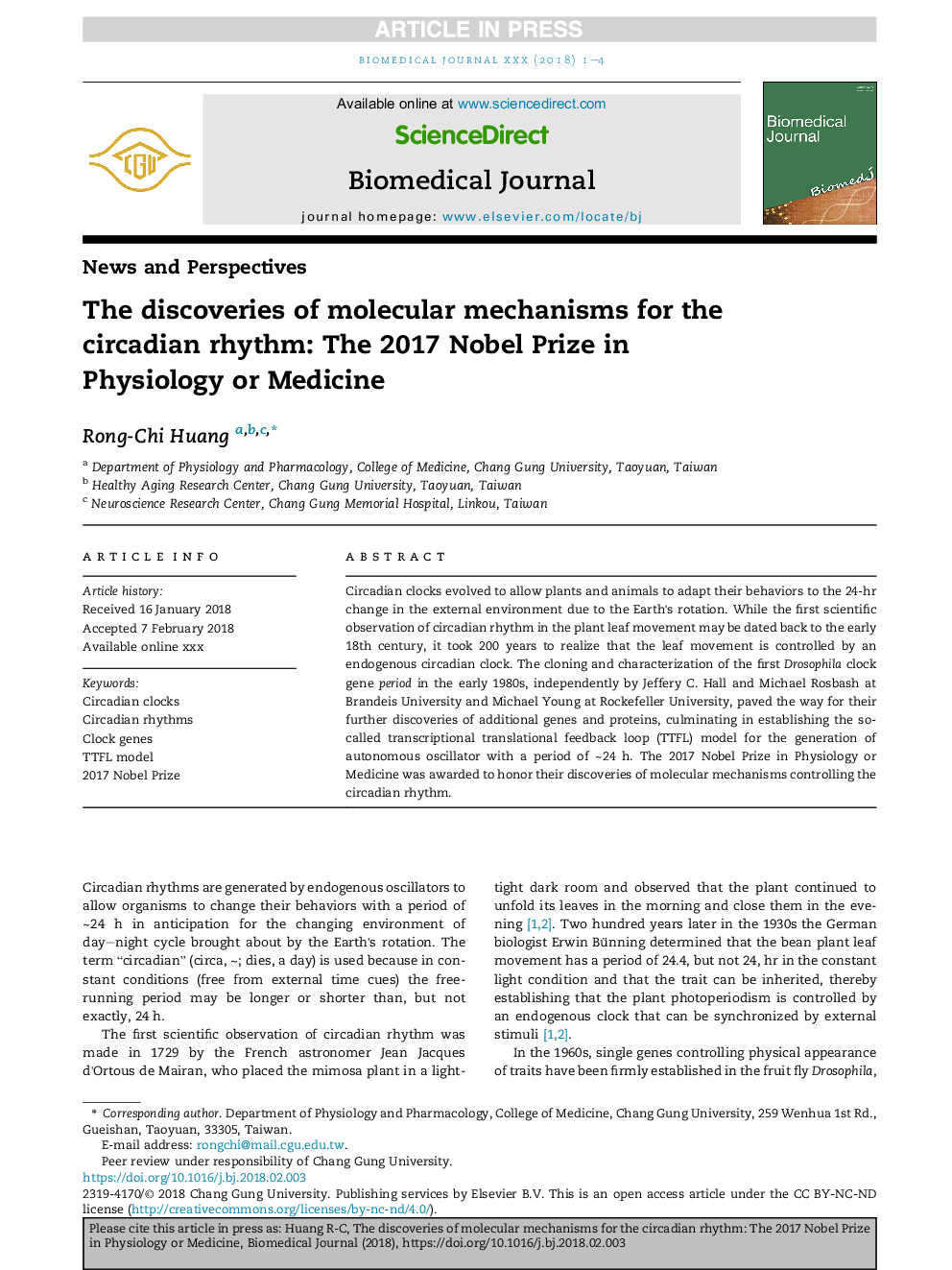| کد مقاله | کد نشریه | سال انتشار | مقاله انگلیسی | نسخه تمام متن |
|---|---|---|---|---|
| 8431911 | 1546483 | 2018 | 4 صفحه PDF | دانلود رایگان |
عنوان انگلیسی مقاله ISI
The discoveries of molecular mechanisms for the circadian rhythm: The 2017 Nobel Prize in Physiology or Medicine
ترجمه فارسی عنوان
کشف مکانیزم های مولکولی برای ریتم شبانه روزی: جایزه نوبل فیزیولوژی و پزشکی در سال 2017
دانلود مقاله + سفارش ترجمه
دانلود مقاله ISI انگلیسی
رایگان برای ایرانیان
کلمات کلیدی
موضوعات مرتبط
علوم زیستی و بیوفناوری
بیوشیمی، ژنتیک و زیست شناسی مولکولی
تحقیقات سرطان
چکیده انگلیسی
Circadian clocks evolved to allow plants and animals to adapt their behaviors to the 24-hr change in the external environment due to the Earth's rotation. While the first scientific observation of circadian rhythm in the plant leaf movement may be dated back to the early 18th century, it took 200 years to realize that the leaf movement is controlled by an endogenous circadian clock. The cloning and characterization of the first Drosophila clock gene period in the early 1980s, independently by Jeffery C. Hall and Michael Rosbash at Brandeis University and Michael Young at Rockefeller University, paved the way for their further discoveries of additional genes and proteins, culminating in establishing the so-called transcriptional translational feedback loop (TTFL) model for the generation of autonomous oscillator with a period of â¼24Â h. The 2017 Nobel Prize in Physiology or Medicine was awarded to honor their discoveries of molecular mechanisms controlling the circadian rhythm.
ناشر
Database: Elsevier - ScienceDirect (ساینس دایرکت)
Journal: Biomedical Journal - Volume 41, Issue 1, February 2018, Pages 5-8
Journal: Biomedical Journal - Volume 41, Issue 1, February 2018, Pages 5-8
نویسندگان
Rong-Chi Huang,
